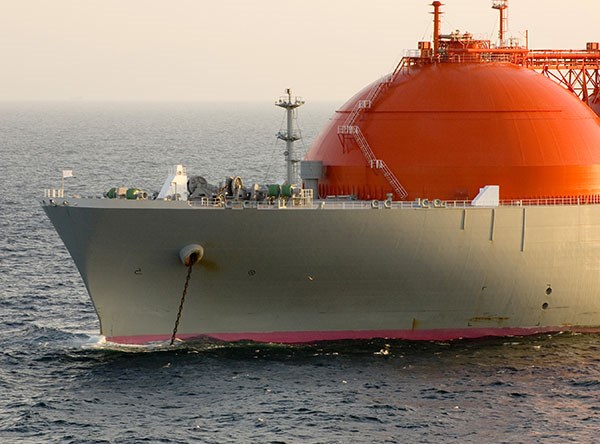A worst case scenario explosion at the proposed Woodfibre LNG would likely not be a safety threat to Squamish and Britannia Beach residents, said one of the world’s leading LNG safety experts in an exclusive interview with the Squamish Chief.
Michael Hightower was contracted by the United States government to examine scenarios regarding possible LNG explosions. He is one of the authors behind the Guidance on Risk Analysis and Safety Implication of Large Liquefied Natural Gas (LNG) Spill Over Water which was released by the U.S. federally-funded research and development centre Sandia National Laboratories.
The 2004 study was requested by the U.S. Department of Energy and Office of Fossil Energy to develop guidance based on a risk-based analysis approach. It explored potential threats and hazards surrounding LNG shipping and the consequences of a large spill from a carrier. The study has since become the bible of LNG safety.
The most damage generated from an LNG explosion would come from a terrorist attack on a carrier, Hightower said. But even under those circumstances, people living outside of a three-kilometre radius would likely not be threatened by any health hazard, he said.
The proposed Woodfibre LNG export plant is located approximately seven kilometres southwest of Squamish’s town centre and approximately 5.5 kilometres southeast of Britannia Beach.
“If you look at my numbers from any of the spills that we calculated, even in dispersion events, it’s three kilometres,” he said of such an event’s safety impacts.
LNG freighters carry 125,000 cubic metres of liquified natural gas. The ships are double hulled, with the inner hull two metres apart from the outer. As a result, these vessels have a good safety record as far as spills go, Hightower said. They are so large most smaller vessels would bounce right off them.
“Generally what we have found is that if they are going less than five knots (9.26 kilometres per hour) they really have a very difficult time having any damage,” he said. “So a lot of harbours have speed control.”
In a disaster, an LNG spill from a ship would likely result in a larger spill than one from an export facility, Hightower said. This is because onshore plants have various safeguards and measures in place to stop the flow of gas if an emergency arises. Hightower examined a spill resulting from a tanker involved in a major collision, such as a rock, creating a five-square-metre breach in the hull.
Such an accident would most likely result in a fire, Hightower said. The impact of the ship would create sparks. In such an event the safety threat comes in the form of a thermal hazard. Thermal hazards are measured by kilowatts per square metre.
In the case of a five-square-metre hole in a ship resulting in a fire, the most significant impacts to public safety and property fall within approximately 100 metres of the spill, with a lower public health risk reaching just beyond 750 metres. The high risk zone (100 metres or less) is defined as 35 kilowatts per square metre — enough energy to cause significant burns. The outer limit safety risk is five kilowatts per square metre, which would cause a sunburn if you didn’t walk away from it, Hightower said.
In the case of a terrorist attack the high risk zone expands to 500 metres with far reaching impacts reaching approximately 1,500 metres.
“To asphyxiate you have to have about 50 per cent LNG in the air, which means you have to be right in the middle of the cloud and that is a pretty hard thing to do,” Hightower said.
In the highly unlikely case that there is a large LNG spill from a carrier that doesn’t catch on fire, a gas cloud can form. It travels out, close to the ground, until it dissipates or meets an ignition source. If the cloud hits an ignition source, such as a car backfiring, the LNG will burn back to its source.
But it’s not like a scene out of Back To The Future, Hightower said. As with clouds, the vapour will be concentrated in some parts and not in others.
“So this thing kind of has to weave its way around as it starts to burn in areas of the right concentration. For the most part that does pretty minimal damage, it singes your hair, but it is a very transient fire; it is only for a few seconds as it goes through,” he said, noting it would require a very calm night for a gas cloud to reach a three-kilometre length.
Natural gas is very difficult to explode out in the open, Hightower said. It requires a huge ignition source, something a lot larger than any human being could carry. Hightower’s study helps answer stakeholders questions, queries partly due to the lack of information of large-scale LNG spills on water. In more than 40 years of LNG marine transport operations there have been no major accidents or safety problems either in port or on the high sea.
“The impacts to public safety should be generally low for most spills.”




